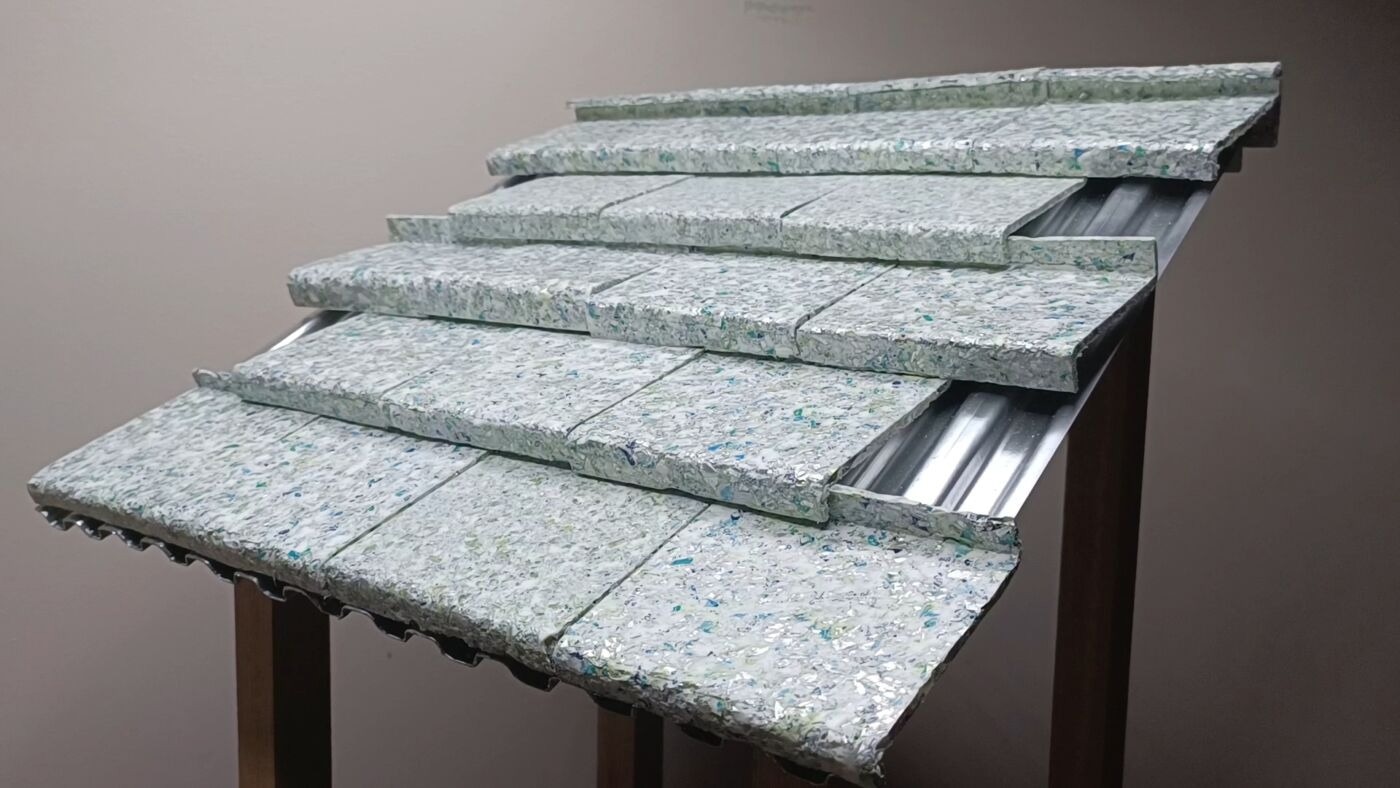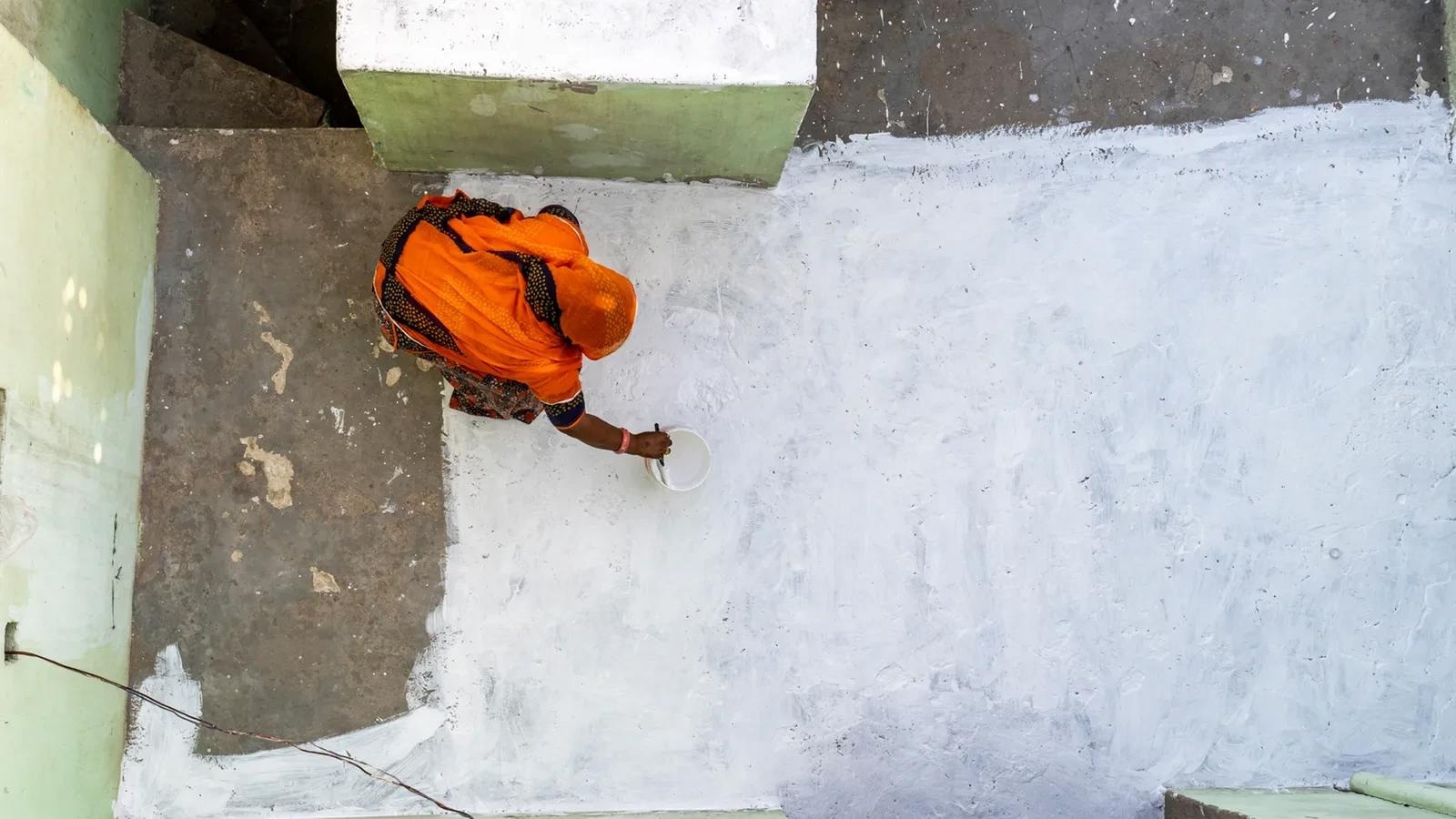In this interview, AZoCleantech speaks with Angela Piazza from Bournemouth University about Wastly Roof Tiles, a product that actively combats climate change and plastic pollution simultaneously.
Can you please introduce yourself and your professional background?
My name is Angela Piazza, and I am from Vicenza, Italy. I am a Bournemouth University (BU) graduate who obtained a First Class Honors in Product Design Futures, a course specialized in future trends, sustainability, and innovation. I worked as a UX Researcher Assistant alongside Dr Yonghun Lim at BU, and I am currently studying a full-time Master's in UX Design.
You have applied to this year’s Prototypes For Humanity project, where pioneers in the scientific field are able to showcase their innovations that have the power to change the world. Please can you introduce the project that you have spearheaded as well as its main objectives?
My project, "Wastly Roof Tiles," addresses the critical impact of climate change in South India, specifically in Chennai. This region experiences extreme temperatures and humidity levels, leading to an overproduction of non-recyclable laminated plastics.
Chennai has a significant portion of its population living in impoverished conditions near dumpsites. For years, these residents have been collecting waste to meet their basic needs. I have developed a new material by reimagining the use of materials and focusing on design principles that emphasize longevity, reuse, repair, and remanufacturing. This material is heat-reflective, lightweight, waterproof, and recyclable.
Utilizing its unique properties, I have designed roof tiles that can be produced locally. This initiative not only provides durable roofing solutions but also offers the potential for increased income for the inhabitants of Chennai.
India generates 1 billion kg of multi-layered plastic waste annually, which can last for over 500 years on land. How do Wastly Roof Tiles contribute to mitigating the effects of climate change and plastic pollution?
Multi-layered plastics, as you said, last for over 500 years on land due to the challenging recycling process caused by the plastic and aluminum combination. Consequently, a significant portion of these plastics are either incinerated or deposited in landfills, such as pill blisters or toothpaste tubes.
I have developed a method to upcycle this specific waste, transforming it into a product that actively combats climate change and plastic pollution.
Additionally, Wastly strives to establish a sustainable business model, empowering disadvantaged individuals to generate income by crafting their own products locally. It is crucial to note that Wastly aligns with multiple Sustainable Development Goals (SDGs), presenting an opportunity to enhance the livelihoods of millions in the world's most impoverished regions.

Image Credit: Angela Piazza/Project for Humanity
Could you explain in more detail the process of converting multi-layered plastics into these roof tiles? What are the key technological innovations involved?
The recycling process is not only simple but also cost-effective. Leveraging an existing waste collection system, where individuals earn their livelihood by gathering waste, facilitates the production and on-site utilization of the product. This approach promotes local production and contributes to a robust circular economy.
How do the tiles perform in terms of reducing indoor temperature and humidity?
A precise answer to this question awaits further material testing; however, initial expectations suggest that the roof tiles are designed to excel in high temperatures, potentially lowering indoor temperatures by over 7 degrees Celsius.
In India, it is a common practice to paint roofs white to reduce indoor heat. Building on this concept, Wastly roof tiles not only feature a white color for enhanced reflection but also offer innovative ventilation solutions.
Thanks to their unique design, these tiles provide both vertical and horizontal airflow, significantly improving indoor climate control. This aspect of the design further enhances their effectiveness in managing heat, making them a practical and sustainable choice for roofing in areas with high temperatures.

Image Credit: Mitul Kajaria/https://www.bbc.com/future/article/20230628-the-white-roofs-cooling-womens-homes-in-indian-slums
What were some of the main challenges you faced in developing this project, and how did you overcome them?
During the initial months, I faced numerous challenges as I grappled with formulating a compelling proposal and navigating the conceptual stage of my project. The complexity and vastness of the problem at hand initially made me hesitant to adopt a more adventurous approach. However, with the unwavering support of my university professors, I chose to pursue my passion and trust my instincts.
By embracing the risk and overcoming my fear of failure, I learned invaluable lessons. This journey not only led to the successful creation of my project but also helped me achieve a significant personal milestone.
Have you conducted or planned any studies to assess the long-term environmental impact of Wastly Roof Tiles, especially in terms of carbon footprint reduction?
Thanks to Prototypes for Humanity, I have been selected as one of the top 100 students in the world with the opportunity to present my project Wastly in Dubai during COP28 and establish significant connections that will allow me to proceed with further testing and studies.
How do Wastly Roof Tiles align with the principles of a circular economy and environmental sustainability beyond waste reduction?
As I previously mentioned, Wastly has a positive social and economic impact, as well as environmental. The business model based on circular economy increases annual wages by 100% and gives indigent Chennai’s occupants the welfare and comfortable living they deserve.
What are your future plans for Wastly Roof Tiles? How do you envision its growth and impact in the coming years?
I envisage the development of Wastly primarily within a smaller, focused context such as Chennai. This approach will allow for comprehensive validation of various aspects, including material properties, product performance, and the business model.
The goal is to establish a local production facility and foster a circular economy within this community. Once proven successful, this model could then be replicated in other developing countries around the world, potentially revolutionizing sustainable building practices on a global scale.
Are there any partnerships or collaborations you are pursuing or planning to develop and distribute Wastly Roof Tiles further?
In exploring potential collaborations and partnerships, I have identified various opportunities within our industry, as well as with those supporting innovative solutions and sustainable startups. As I take this crucial first step into the market, I am actively seeking a strategic collaborator who shares my vision. I am looking for someone instrumental in developing the project, ensuring that we not only maintain but significantly enhance its meaning and potential. Sustainability and a commitment to the principles of a circular economy are paramount in this endeavor.
About Angela Piazza
 Angela is a very strong, self-motivated, and positive thinker, which has helped her to achieve most of her life goals. She traveled to Australia for six months and then went to the UK to study Product Design Futures at Bournemouth University. Her team-oriented personality and problem-solving technique helped her develop high-quality design processes and achieve great success. Angela is very meticulous, and her attention to detail allows her to accomplish any project in the best way possible. Her mission is to positively impact the World by designing for the Future.
Angela is a very strong, self-motivated, and positive thinker, which has helped her to achieve most of her life goals. She traveled to Australia for six months and then went to the UK to study Product Design Futures at Bournemouth University. Her team-oriented personality and problem-solving technique helped her develop high-quality design processes and achieve great success. Angela is very meticulous, and her attention to detail allows her to accomplish any project in the best way possible. Her mission is to positively impact the World by designing for the Future.
Disclaimer: The views expressed here are those of the interviewee and do not necessarily represent the views of AZoM.com Limited (T/A) AZoNetwork, the owner and operator of this website. This disclaimer forms part of the Terms and Conditions of use of this website.